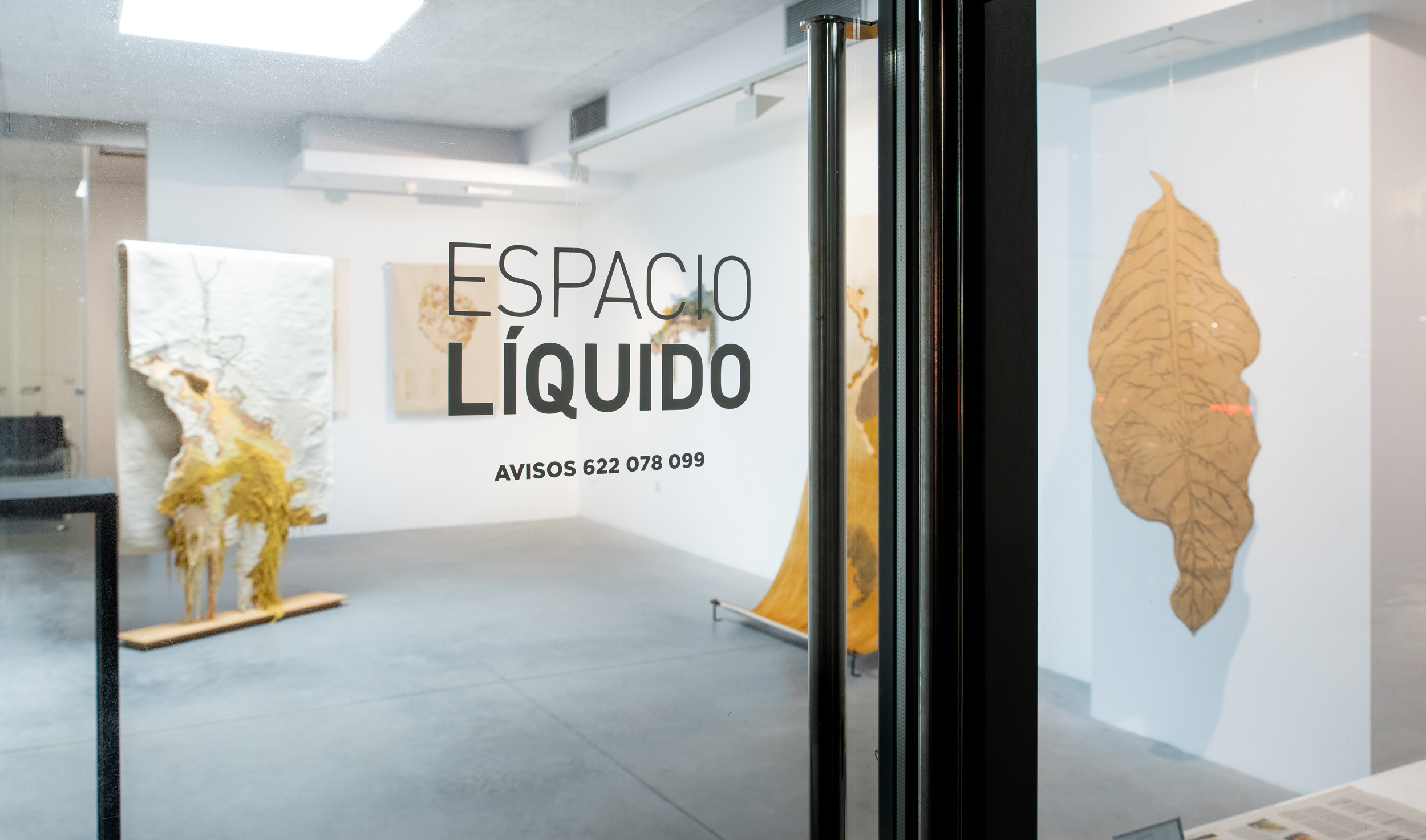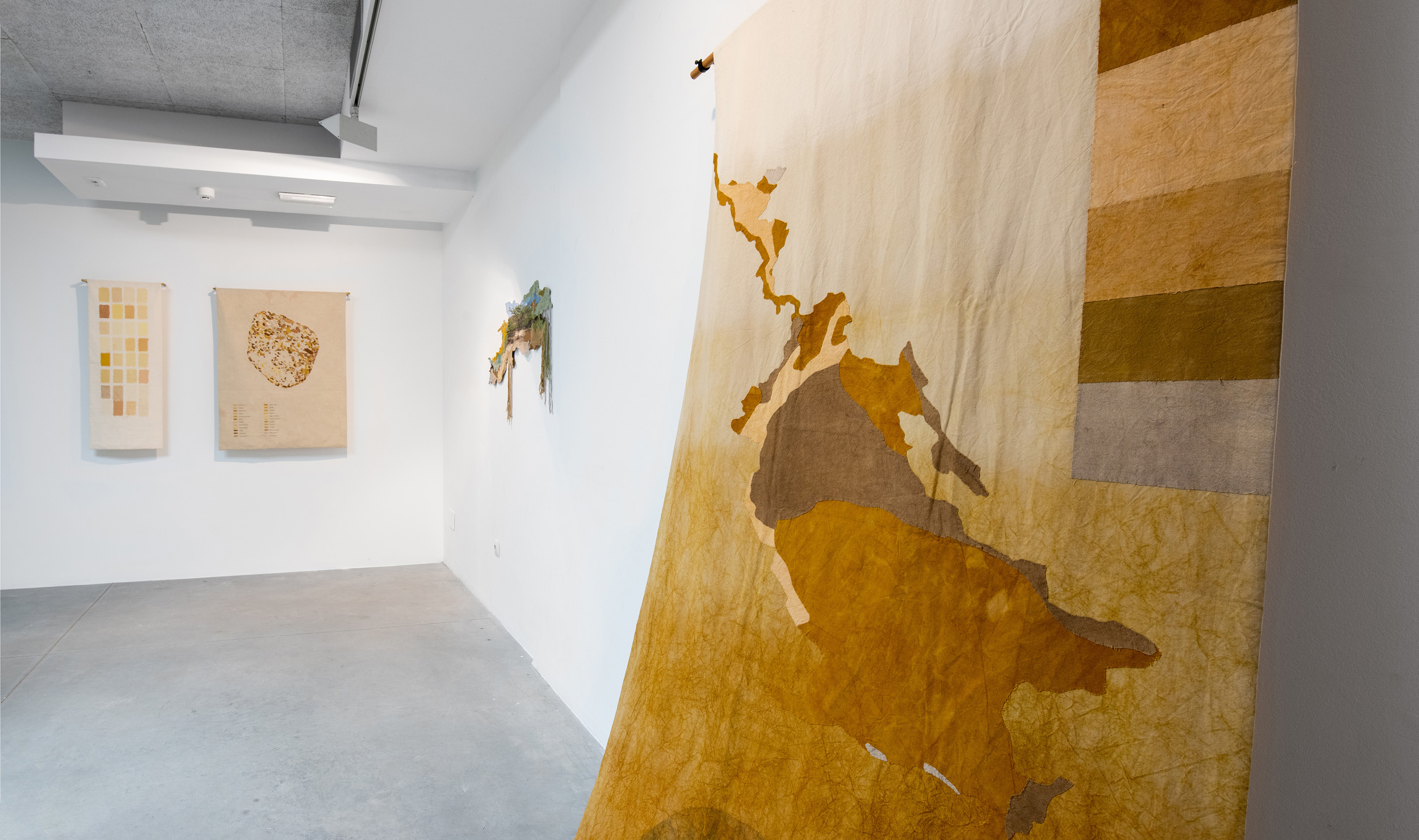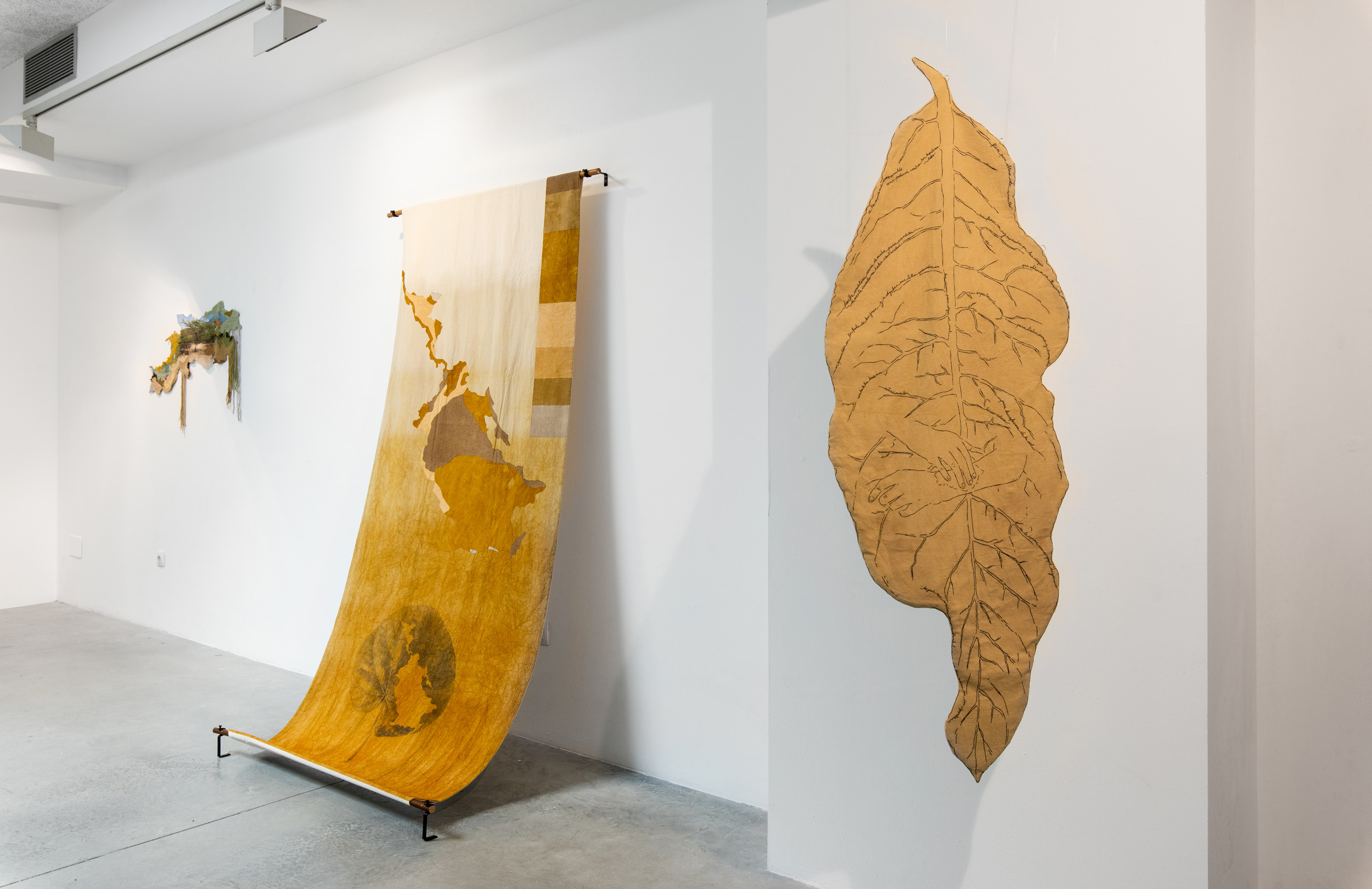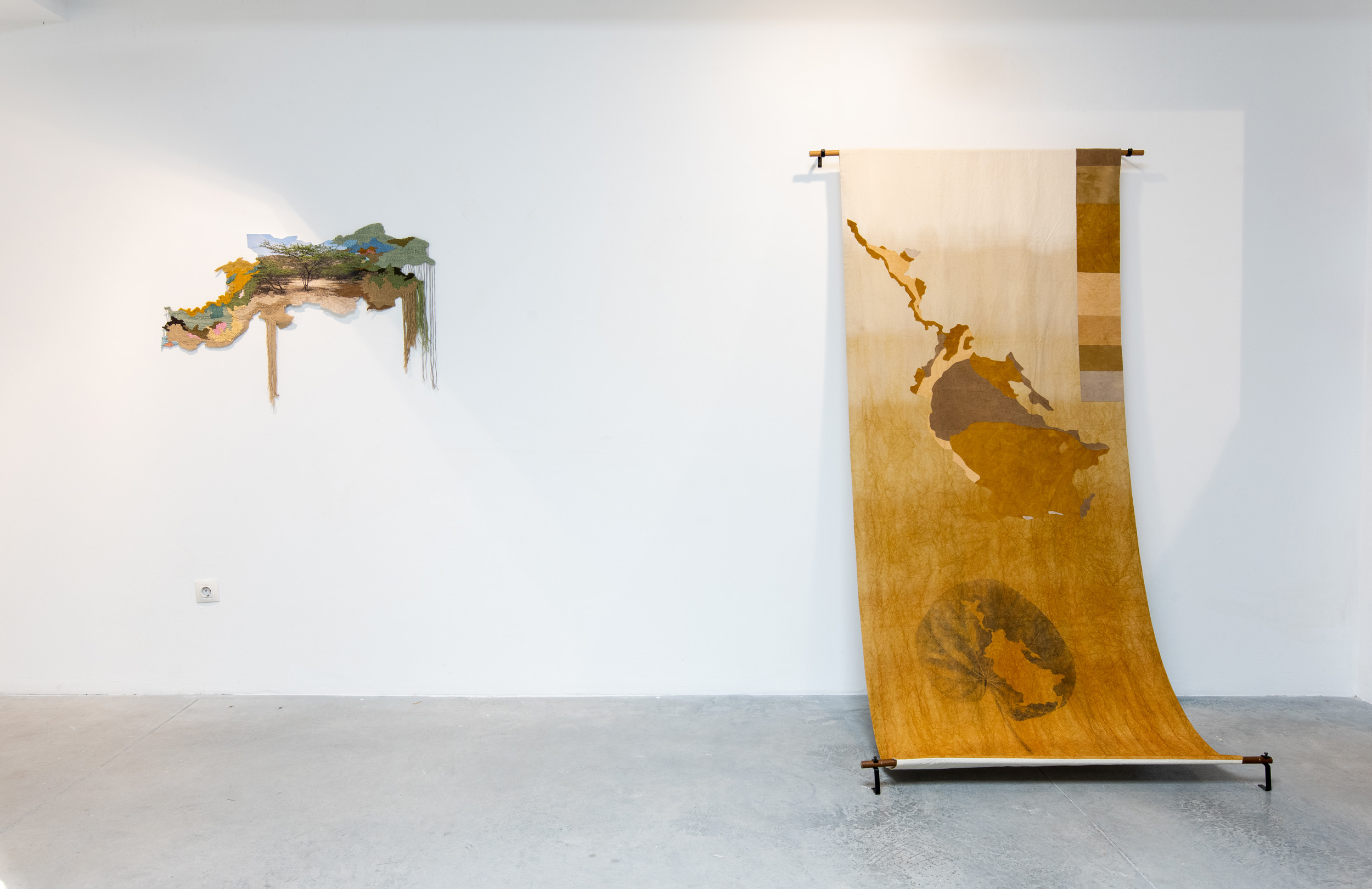No products in the cart.
For this project, Ana Teresa Barboza has lived for several weeks in Laguarres, (Huesca), to continue her research on the relationships between landscape and textiles based on the study and experimentation with the natural elements of a new environment and generate a series of works that reflect on the rituals and properties of some plants that appear in it. A work on the transformation of nature and the forgetfulness of legends as symbols of other forgetfulness.
For this project, Ana Teresa Barboza has lived for several weeks in Laguarres, (Huesca), to continue her research on the relationships between landscape and textiles based on the study and experimentation with the natural elements of a new environment and generate a series of works that reflect on the rituals and properties of some plants that appear in it. A work on the transformation of nature and the forgetfulness of legends as symbols of other forgetfulness.
In “Rituales”, Ana Teresa Barboza (Lima, 1981) enters a new landscape, far from the wool, dyes and reeds of her place of origin or from textile legacies such as those of the Paracas culture, to live among stratigraphic paintings and geological maps and the flora of Huesca, thousands of kilometers away. A path of study and experimentation –sometimes also of introspection– along the Isábena river, which rises in the Pyrenees mountain range and runs through the entire province of Huesca, where plants such as the gall oak, the black poplar, the viborera and Rocks such as conglomerate allow him to know and internalize the place that takes place to record the territory and its properties through embroidery and weaving techniques. Barboza goes through all the natural elements from a careful observation and enters into stones, mountains and rivers to access the symbolic ritual that hide their stories and that beats in the cyclical time from which emanate relationships between animals, minerals and plants. The leisurely rhythm of her movements when weaving over the cotton warp is a gesture that is repeated over and over again, in the form of a cycle, between threads and natural pigments.
In an effort to recognize and adapt to this new place, the artist began to collect plant species – running thistle, ajonje, olivarda, corcoja, mullein or even river mud – and to experiment with dyes: “This is an observation exercise that not only allows me to get to know a new environment, but also helps me to connect with it through these extracted pigments. I also think about the migration of these species that carry with them essences containing medicinal properties and local knowledge”.
The artist has created large pieces with hemp fabric and cotton warp that refer to species or landscapes, to return the symbolic ritual through her artistic practice and prevent the disappearance of the plants themselves and the local knowledge of the legends that built part of its history. The plants collected and the way he has described the places where they grow, tell us in some way how these species are being forgotten. The dyeing of the plant on the fiber -which he shows in some cases in the form of a legend that includes species and colors- thus becomes a record of the soil and the environment in which they grow, and Barboza establishes a relationship between this oblivion and that of the very fabric he uses in some of his works -hemp fiber- since its cultivation has been relegated in favor of other synthetic fabrics. In doing so, she not only values ancestral techniques, but her work has the particularity of engendering – unlike what happens with other artistic proposals that proliferate globally and that make use of textiles – a social fabric that involves the practices of diverse communities and in which care, respect, responsibility and commitment to natural resources prevail.
In this way, the natural dye on the fibers becomes a record of the soil and the environment in which they grow. In one of the works, all the colors of the minerals that make up the rocks that accompany them are added. Another textile represents the different geological elements woven into a map of the rock formations that outcrop on the surface of Huesca. A stony, sensitive skin in the hands of the artist, who concludes: “The textiles presented are a record of time and the information that I collect about different plant and mineral species, as a way of understanding the relationships and rhythms that are woven in this new around. Between obtaining the dyes, the embroidery work and the weaves of the fabric, my body tries to incorporate a new time into the rhythm of natural cycles. The textiles not only record ritual movements of a body but also show us images that try to reveal the continuity and relationships between the animal, the vegetable and the mineral. Animal fiber absorbs dyes from plants, much in the same way that plants absorb minerals from the soil. The new color that I give to the fibers with the essence of species that seem to be being forgotten, are presented almost like samples, waiting to be observed again and fix new meanings on them. The practice of weaving and the urgent observation of an environment allow me to create new links between the solidity of stones and the fragility of plants. The adaptation flows when my body begins to incorporate roads, trees and temperatures. Through textiles, adversity becomes docile”.
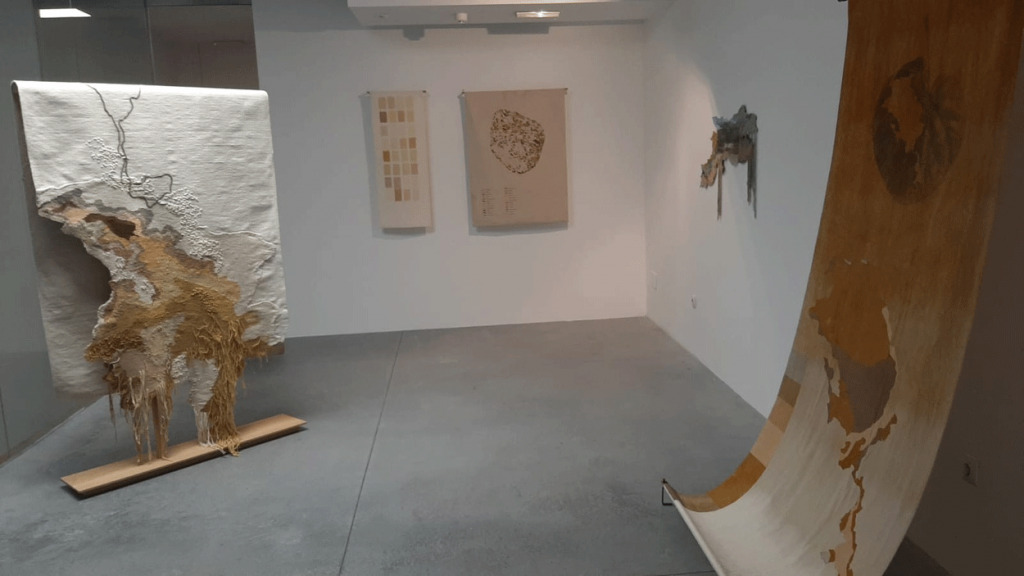
Brief biography of the artist:
Ana Teresa Barboza, (Lima, 1981), uses weaving and other traditional craft techniques to transmit to the viewer a meditative and powerful observation of her surroundings, to focus on the bonds that unite her with others. In doing so, it seeks to relearn from the work of artisans to re-establish contact with the manual and bodily processes with which heritage, culture and images have been taking shape and to show the traces left by the body and nature in them.
Graduated from the School of Art, she has participated in solo and group exhibitions in South America, North America and Europe and has extended her studies and completed residencies in Paris, Taipei, Geneva and Lima. His work can be found in many American, European and Asian collections. Recently, his work has participated in the Cuenca Biennial (Ecuador), Paiz Art Biennial (Guatemala), Sydney Biennial (Australia) and his latest works have been seen in his individual exhibition at the Malba Museum in Buenos Aires and at the Iberoamericana de Toro (Zamora).
Ana Teresa Barboza showed her works for the first time in Spain during the 2015 Estampa fair. After his time at ARCO 2019 he participated in Mudanza, the inaugural exhibition of La Gran in Madrid (shared with Espacio Líquido), in 2019. Subsequently, he has participated in fairs such as JustMad and Estampa and in group exhibitions in joint projects of both galleries. His work is present in institutional collections in Peru, the United States, Taiwan and Argentina. In Spain, in those of the Masaveu and Entrecanales Foundations or the Studiolo collection.
“I try to highlight the fabric construction process so that the final result is not just an image made with threads, but the complex construction of a body woven by warps and wefts, to give the image a tactile dimension. (…) In the end, the fabric is not only an image, but also speaks of everything that develops around a fiber in a specific place.” (Ana Teresa Barboza).
With the collaboration of:




